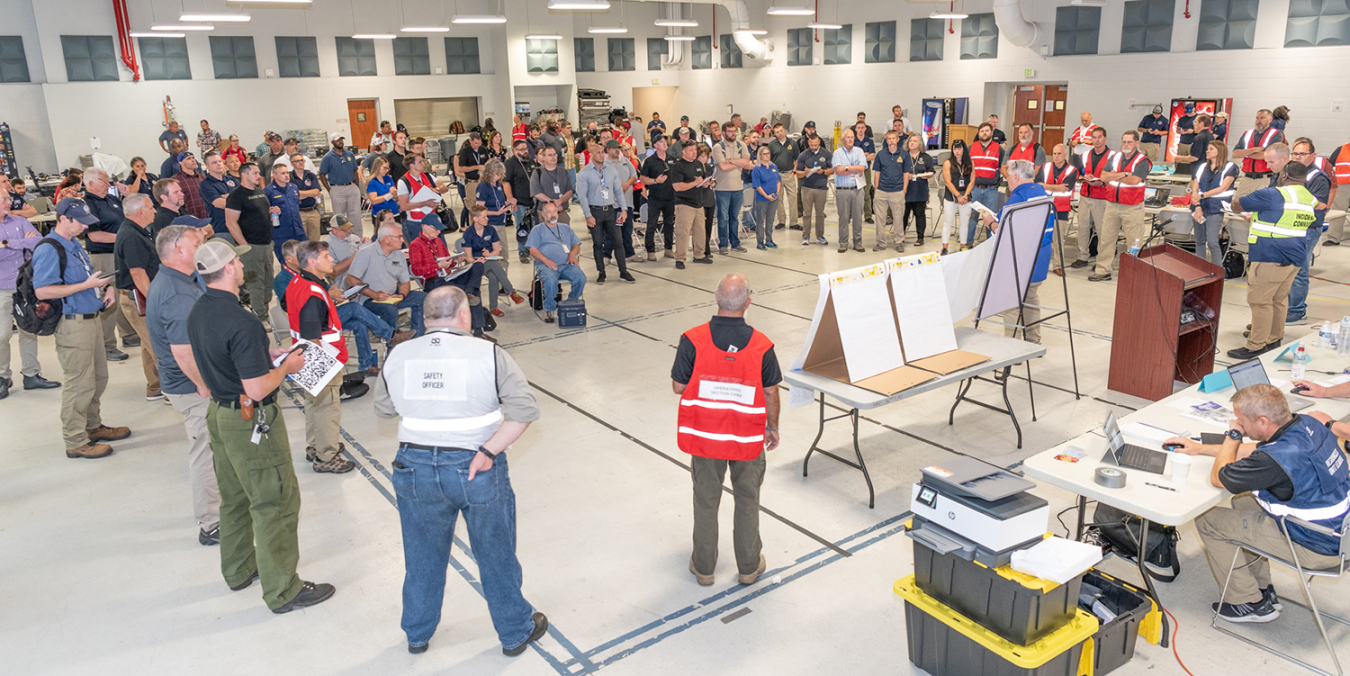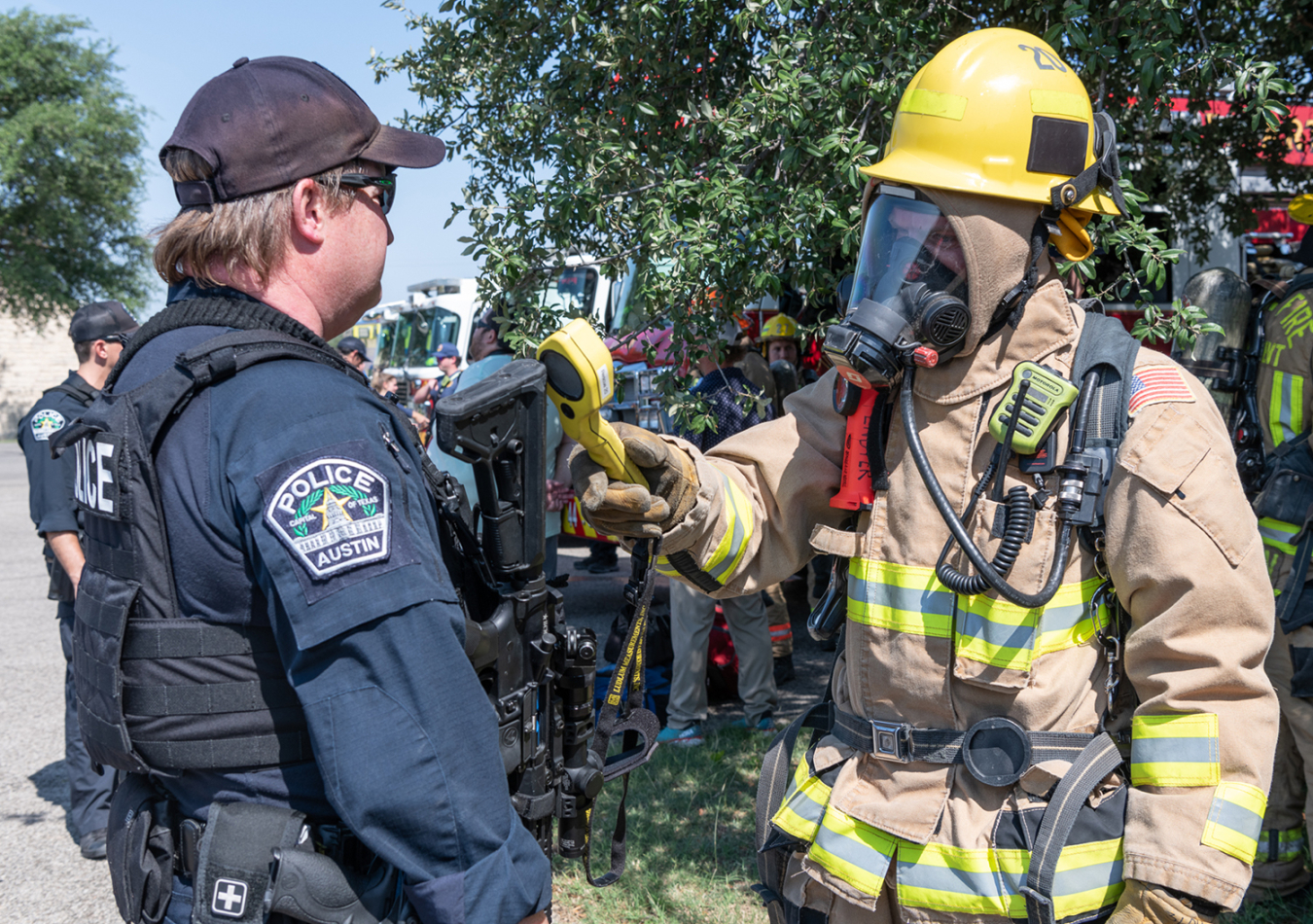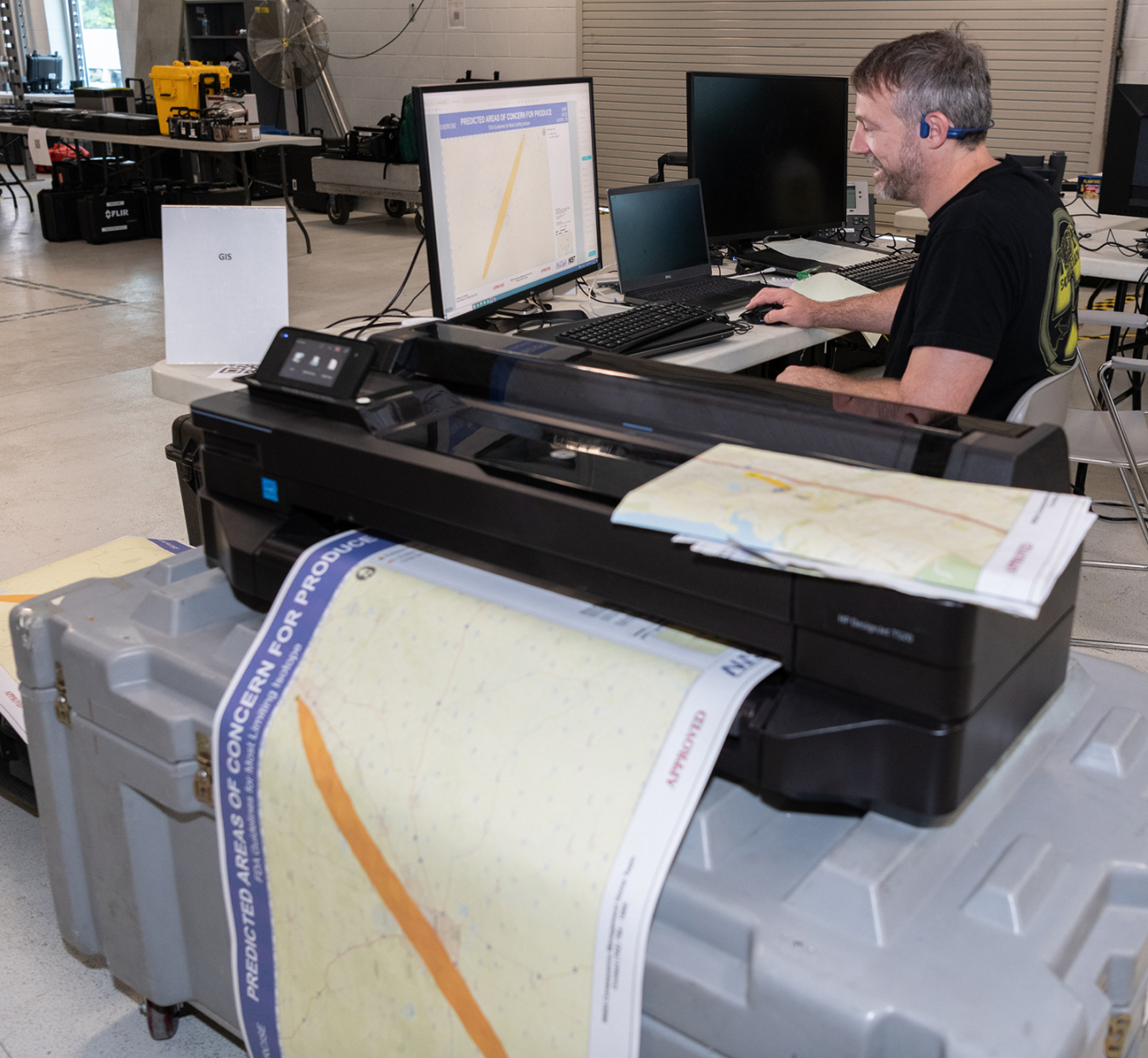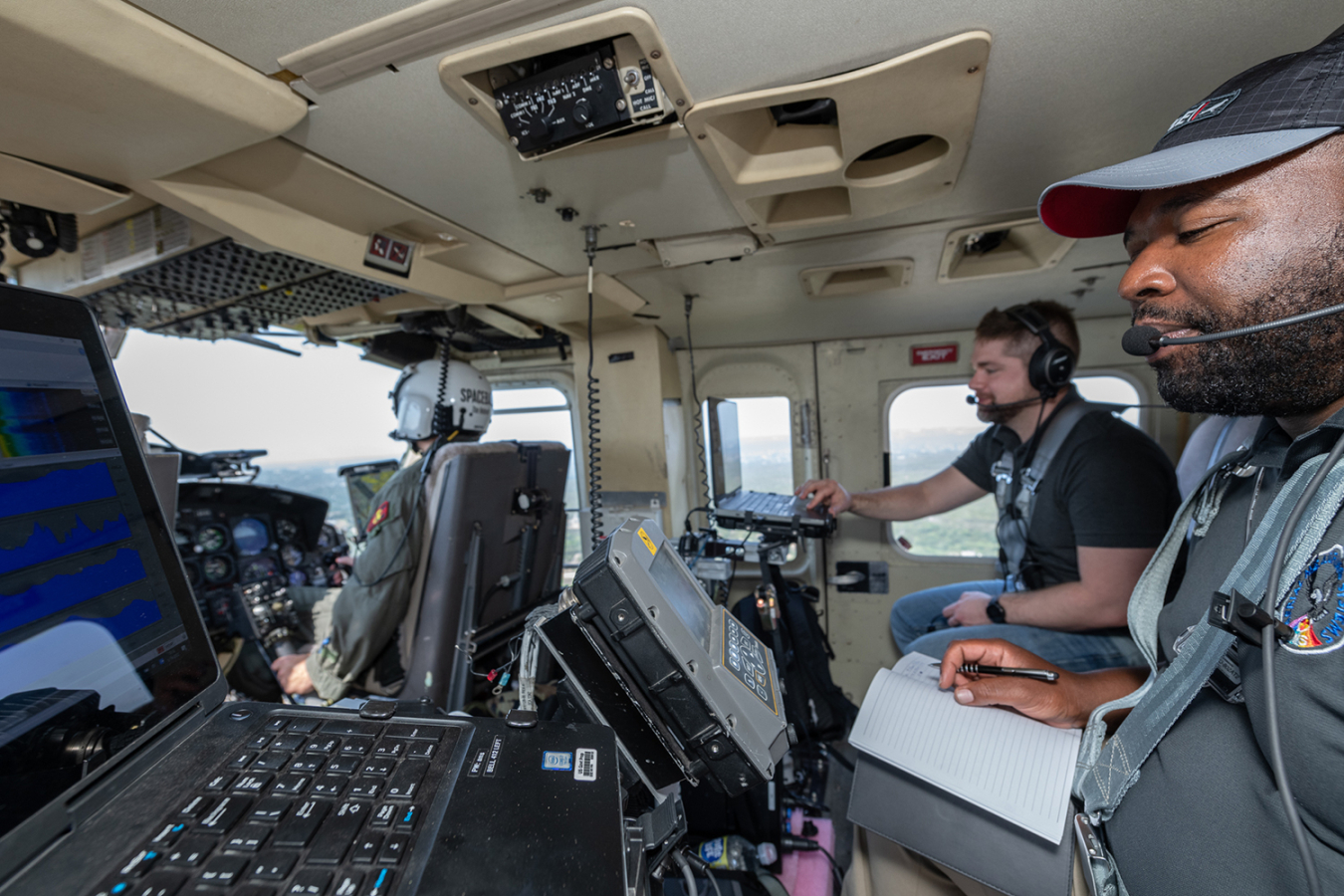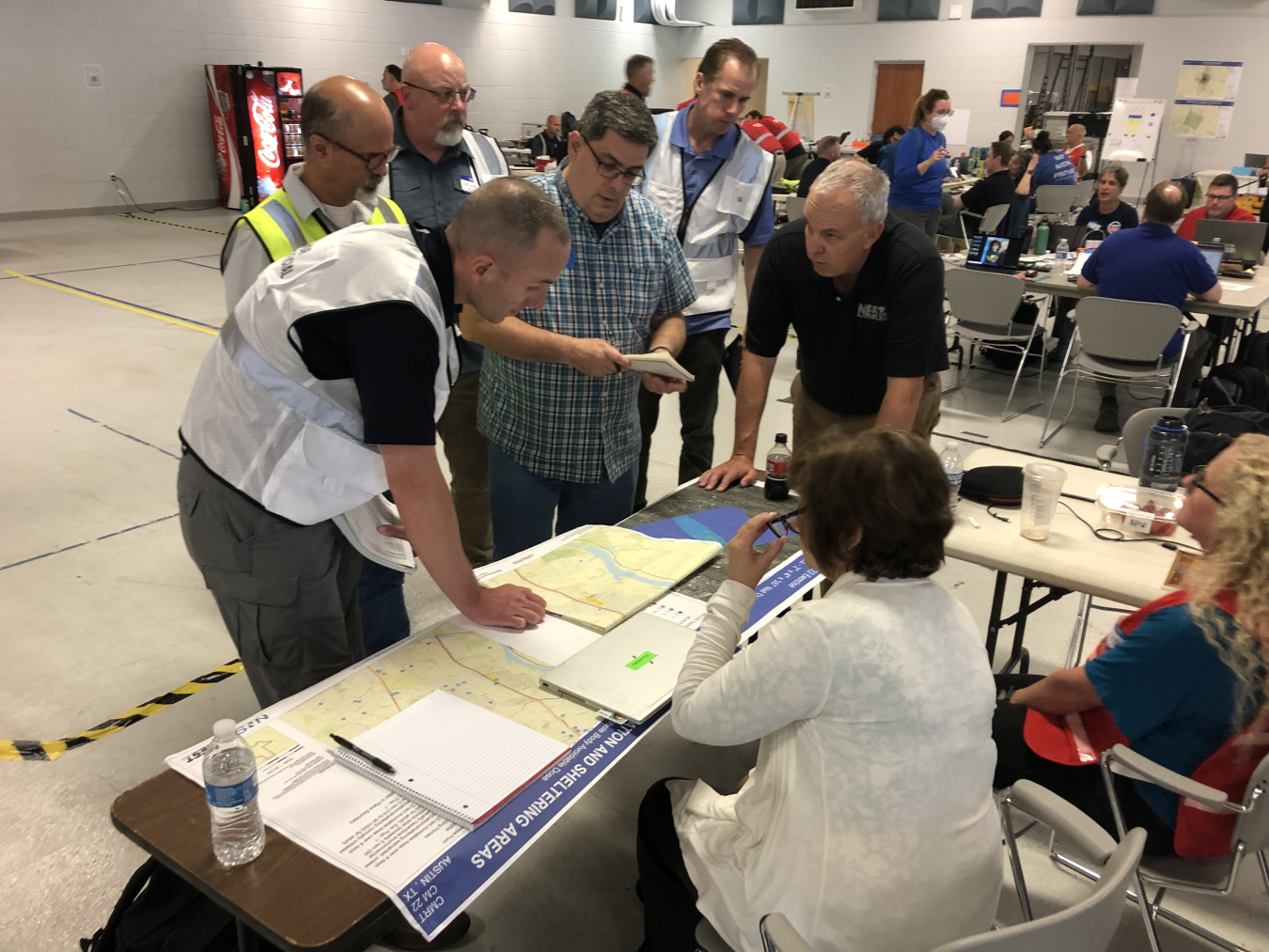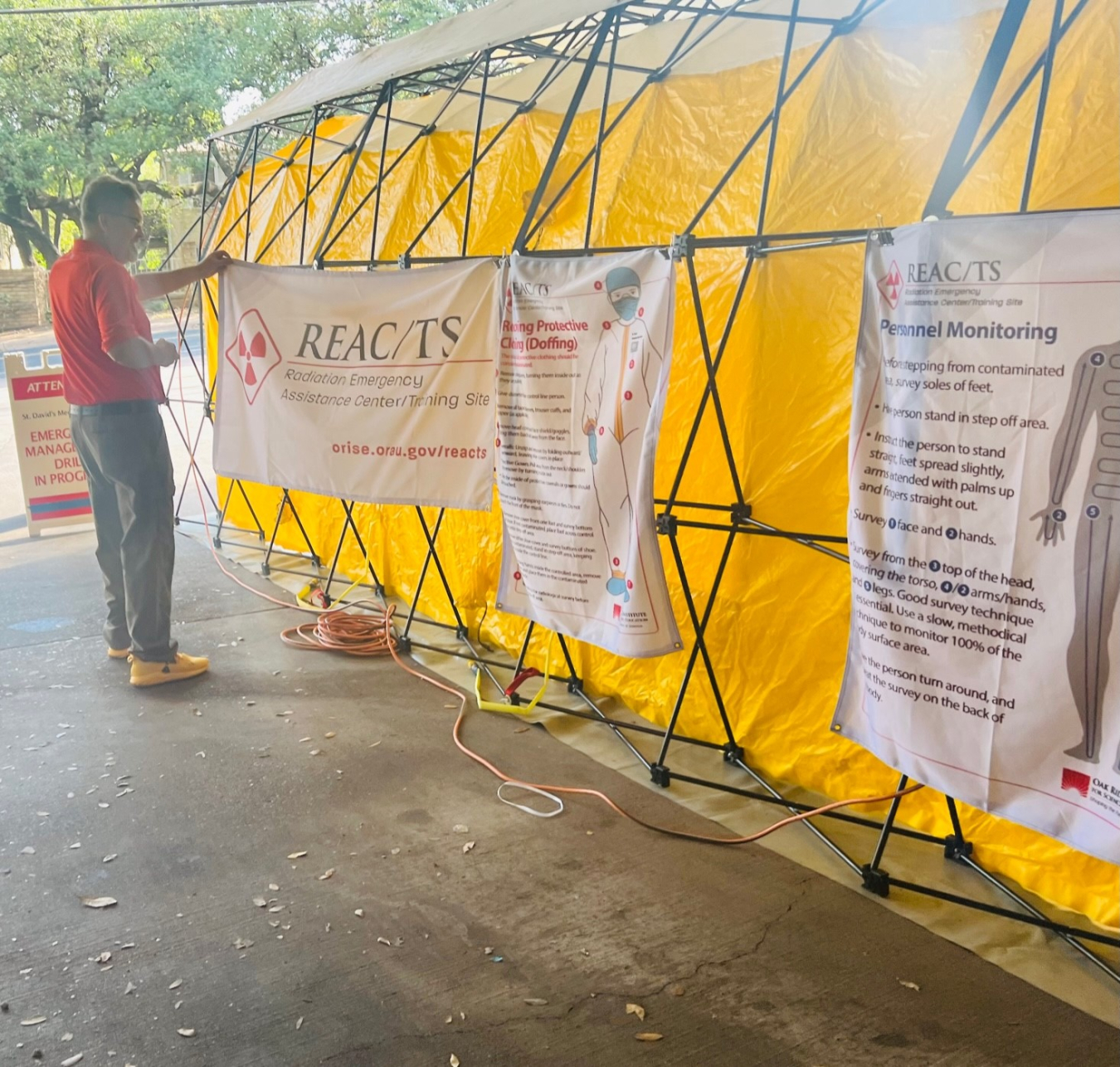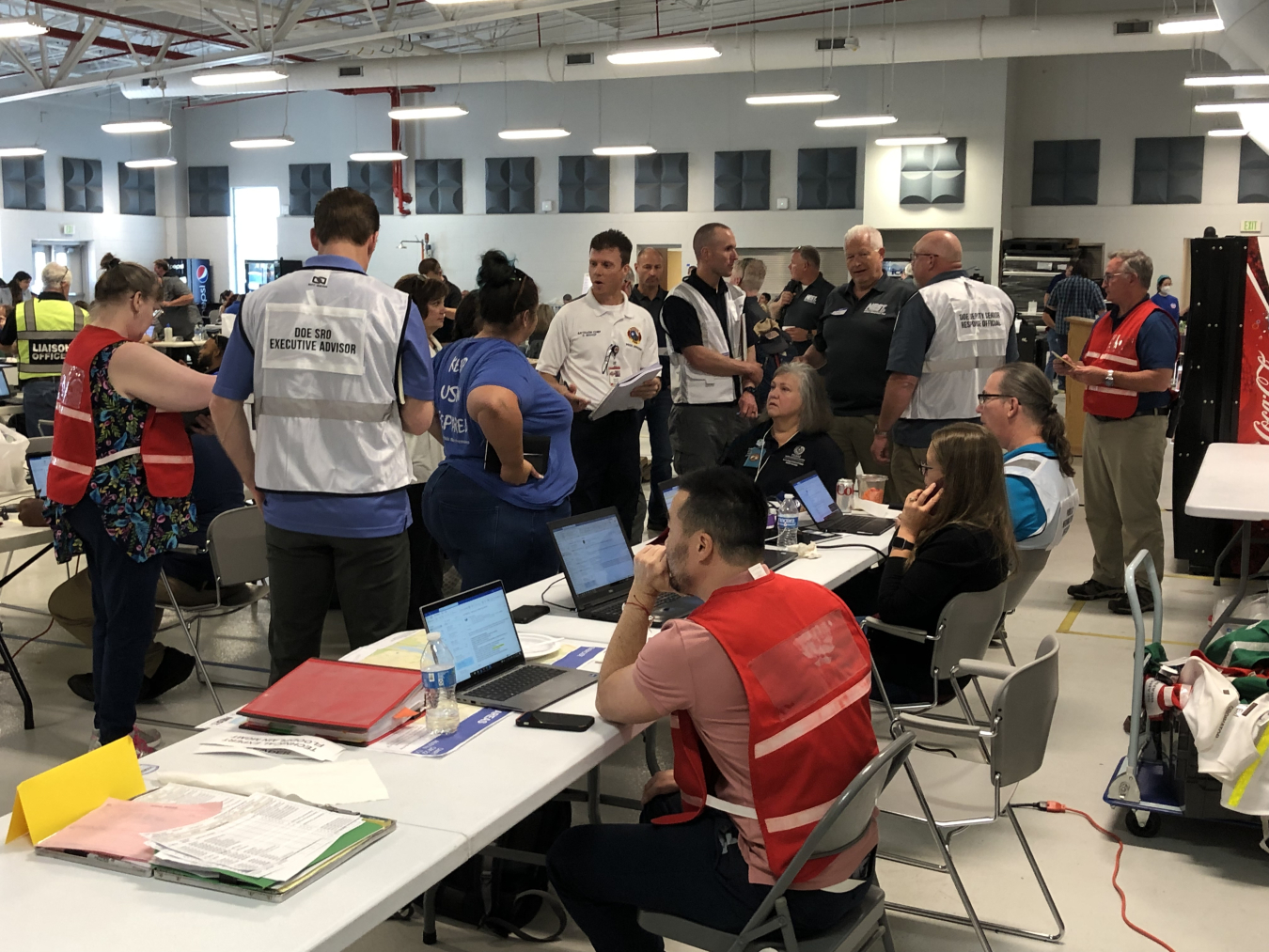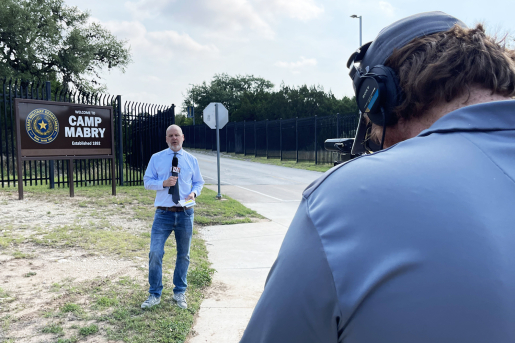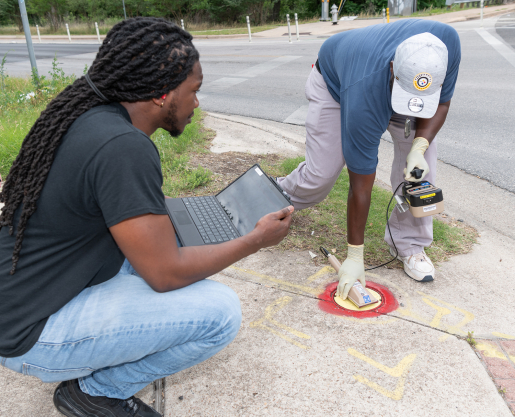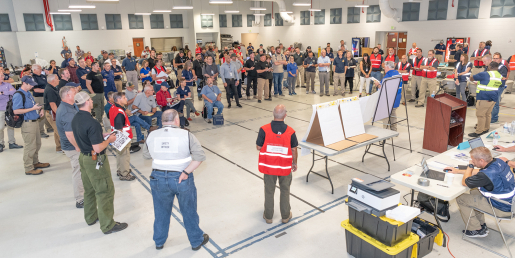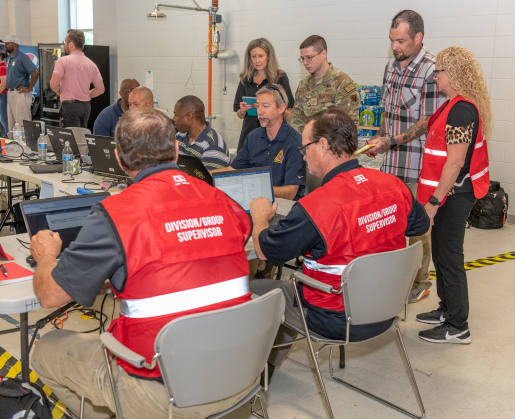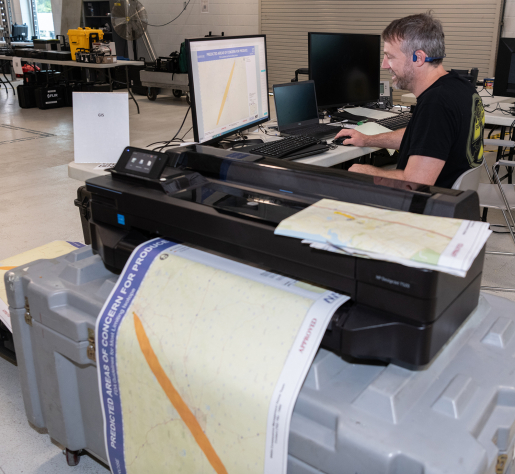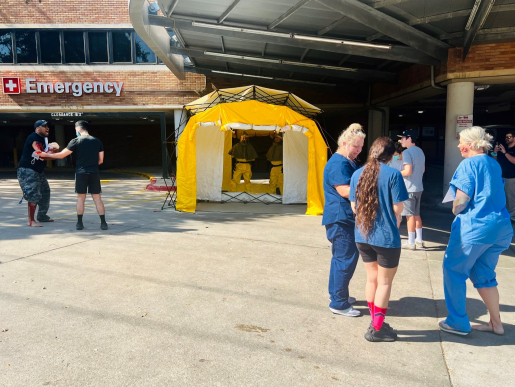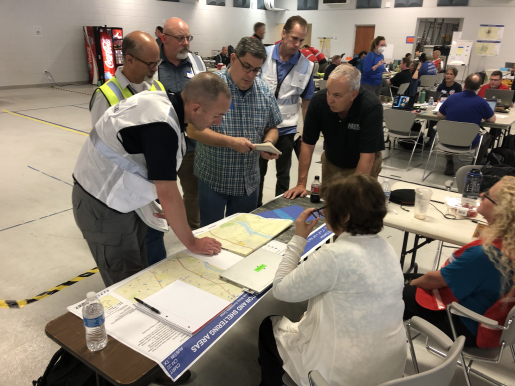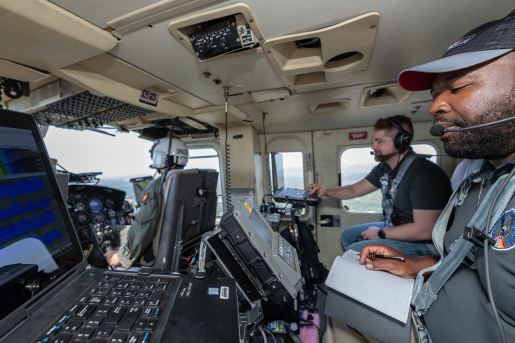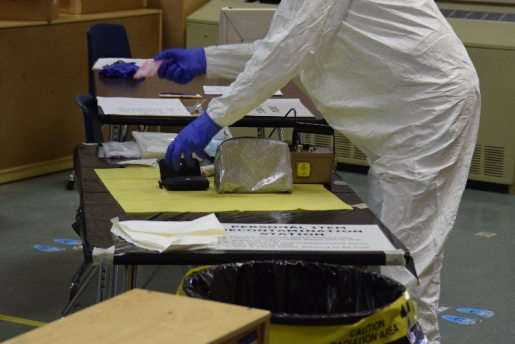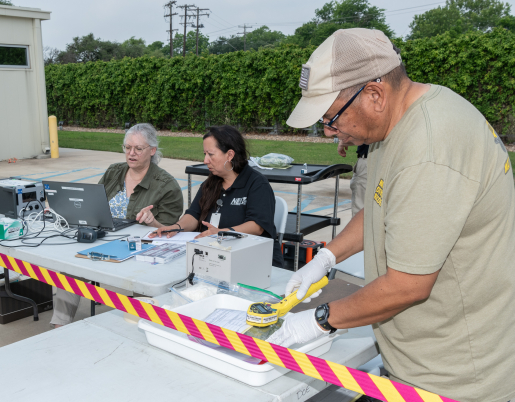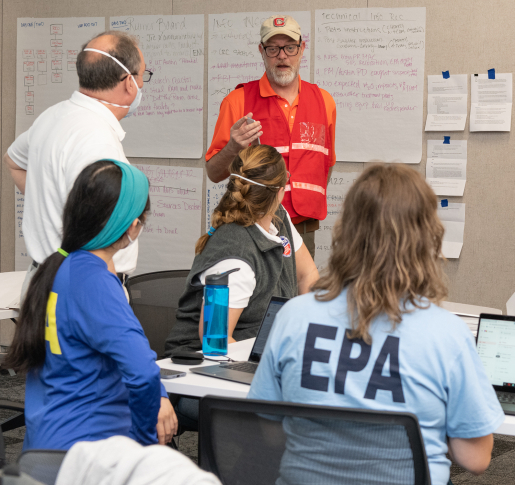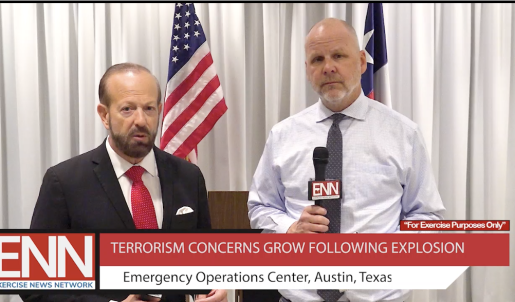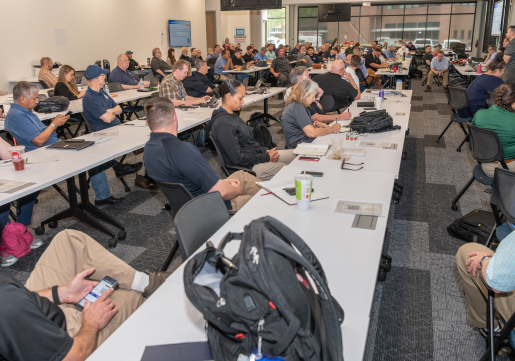Blog
NNSA’s large-scale ‘dirty bomb’ exercise in Austin succeeded by exposing potential gaps and failures
The Cobalt Magnet 22 exercise was organized by NNSA and held in Austin in 2022. The weeklong scenario had terrorists first warn about then detonate a "dirty bomb." Hundreds of responders came together to handle what happened next.
National Nuclear Security Administration
August 1, 2022
 min
minute read time
min
minute read time
Cobalt Magnet, a radiological consequence management practice event, did its most important work by testing responders from dozens of agencies in realistic and challenging ways
What would happen if terrorists threatened to detonate a radiological weapon – a so-called “dirty bomb” – in a major American city? How would federal, state, and local agencies work to locate and neutralize the device? And if the terrorists succeeded in exploding the weapon, how would these authorities work together to deal with the consequences?
Those were the key questions behind the Cobalt Magnet 22 exercise organized by the National Nuclear Security Administration (NNSA) and held in Austin, Texas, in May 2022. In the weeklong scenario, terrorists first warned they were going to detonate a radiological dispersal device and then followed through with the threat. Hundreds of responders from more than 30 government agencies came together to handle what happened next. The entire exercise involved the following discrete elements:
- Search for the radiological device
- Treat the wounded
- Identify and capture the suspects
- Identify the material used in the device
- Map the contaminated areas
- Protect the public
- Communicate to the public
The NEST mission
Many of the capabilities being tested during the exercise were of NNSA’s own Nuclear Emergency Support Team, made up of world-class scientists and technical experts from the Department of Energy’s constellation of national laboratories, plants, and sites who have expertise in a variety of nuclear incident response missions. NEST is responsible for responding to everything from weapons of mass destruction incidents to U.S. nuclear weapon accidents and nuclear reactor emergencies.
For Cobalt Magnet, NEST focused on consequence management, the discipline that encompasses all measures to protect public health, provide emergency relief, and restore essential services after a disaster, in this case the release of radiological material. (The name “Cobalt Magnet” was a play on the letters in “consequence management.”) NEST’s tasks included figuring out what radiological materials were involved in the attack, which in turn helped predict and map how far those materials could have been carried by the wind. Finally, those models were used to target where to send radiological-detection teams – both on the ground and in the air.
“The men and women of NEST are trained to provide decision-makers with timely, actionable scientific advice during fearful events,” said Jay Tilden, NNSA Associate Administrator and the U.S. Department of Energy’s Deputy Under Secretary for Counterterrorism and Counterproliferation. “Saving lives and reducing the impact of a nuclear incident requires a full understanding of what happened, who will be affected, and what the optimal response should be. NEST’s bread and butter is providing that information to local, state, and federal leaders as rapidly as possible.”
‘A comprehensive scenario’
Every organization involved in the exercise – from the smallest local agencies to the largest federal ones – had a specific role to play, just as they would in real life.
“Over 18 months the team put together a comprehensive scenario to test all of the participants,” said Jackson Crocker, the Director of NNSA’s Office of Nuclear Incident Response. “When we added the realities of holding an exercise in Austin in May with bad traffic and 100-degree heat, it just added to the challenge.”
Dozens of organizations with disparate missions – local fire departments, the state health department, the federal Environmental Protection Agency, the Federal Bureau of Investigation – participated in planning the exercise in the months leading up to the event.
“There’s a lot of coordination that goes into a complex interagency exercise of this magnitude,” said Philip Schneider, NNSA’s Emergency Operations and Exercise Planner. “We had hundreds of calls and eight planning conferences over two years to discuss various aspects of the exercise. Each agency has its own specific training objectives and concept of how their agency would support a scenario like this, so it was a bit like herding cats.”
The five-day exercise was scheduled down to the minute, with numerous “injects” – or plot twists – that added realism to the scenario. In one inject example, a hospital wanted to test contacting the Radiation Emergency Assistance Center/Training Site about treating radiological injuries. But the planning team also inserted injects to put stress on the exercise participants.
“When we told the players their cellular network had gone down and to use backup communications methods to talk to each other, there were a lot of angry faces at the command post,” he said. “But they handled it well.”
A no-fault exercise
Locally, Cobalt Magnet was led by Austin’s Office of Homeland Security and Emergency Management, directed by Juan Ortiz, who said the value of the exercise wasn’t just in what agencies got right – but what they got wrong.
“The exercise was a great way to test not only how we work with our federal partners in an emergency, but with our local, county, and state colleagues, too,” Ortiz said. “Not everything we did worked. But my experience is that you learn as much, if not more, from your mistakes as your successes. We will be reviewing aspects of the exercise to improve our processes, adjust systems, and train our people.”
The no-fault aspect of the exercise was key to its success, Schneider said.
“If we do not allow our folks to fully test their limits and make mistakes, we cannot identify gaps in our capability, identify recommended solutions, and fix them before a real incident occurs,” he said. “Our mission is too important to not make full use of this rare opportunity to test our entire response in a challenging no-fault environment.”
A large area
The scenario included all of metropolitan Austin, and a large number of venues were used to host various pieces of the response, including various law enforcement agencies, Austin’s Emergency Operations Center, Camp Mabry, and Austin Public Health. But the largest footprint by far was at the Armed Forces Reserve Center, on the south side of the city’s airport.
“We are so thankful to the Armed Forces Reserve Center for hosting us in such a spacious, useful – and air-conditioned – space,” Schneider said. “With hundreds of additional personnel and their equipment, you can imagine the burden we put them under. It would have been a lot harder without them.”
Letting the public know
Because a large number of people live near “ground zero” of the dirty bomb detonation, communicating with the public was an important aspect of the exercise. In such a situation, communications specialists would create a joint information center to coordinate messaging to the public, including information about what happened and guidance on how to protect one’s health and safety. There were also simulated journalists on hand to trip them up.
A continuing exercise series
NNSA holds consequence management exercises every two or three years. Since 2012, it has held similar exercises in Missouri, Colorado, Minnesota, and Florida. The next one is planned for Michigan in 2025.
Here is a photo gallery from the Cobalt Magnet 22 exercise:
Caption
The Cobalt Magnet 22 exercise scenario centered on Camp Mabry in Austin, Texas. Here, a simulated media team from Argonne National Laboratory reports from the scene.
Caption
A member of the Austin Fire Department checks an Austin Police Department officer for radiological contamination using a handheld detector during the Cobalt Magnet 22 exercise.
Caption
A field monitoring team takes radiological readings in the area surrounding Camp Mabry in Austin, Texas, during the Cobalt Magnet 22 exercise.
Caption
The leaders of the exercise do a pre-brief for hundreds of participants at the Armed Forces Center in Austin, which hosted the Cobalt Magnet 22 command post.
Caption
The Cobalt Magnet exercise utilized the Incident Command System’s Unified Command concept, where local and federal agency representatives work together to address the incident. Here, the Austin-area participants met their NNSA colleagues for the first time.
Caption
Exercise “controllers,” in the red vests, evaluated how “players” overcame various “injects” – or twists – in the Cobalt Magnet scenario.
Caption
One NNSA mission is to create actionable information for decision makers. Here, an expert creates a plume map to show how far wind had carried the radiological material during the Cobalt Magnet 22 exercise.
Caption
An Austin-area hospital receives simulated patients from the “dirty bomb explosion simulated in the Cobalt Magnet exercise.
Caption
NNSA’s Radiation Emergency Assistance Center/Training Site (REAC/TS) helped community reception centers provide emergency response and subject matter expertise on the medical management of radiation incidents during the Cobalt Magnet exercise.
Caption
Members of the Unified Command Group leadership discuss protective action during the Cobalt Magnet exercise.
Caption
The Unified Command held a briefing before simulated members of the media during the Cobalt Magnet exercise.
Caption
NNSA’s Aerial Measuring System aircraft operated throughout the Cobalt Magnet exercise to determine the extent and severity of radiological contamination.
Caption
Austin Public Health hosted a Community Reception Center radiological material decontamination station. CRCs are where displaced people in the exercise could have gone to be assessed for contamination during the Cobalt Magnet 22 exercise.
Caption
An NNSA field-monitoring sample collection site used during the Cobalt Magnet exercise.
Caption
The exercise utilized a Joint Information Center, which brought together public affairs staffers from federal, state, and local organizations to keep the simulated public and media informed during Cobalt Magnet.
Caption
Members of Argonne National Laboratory’s Public Affairs Science and Technology Fusion Cell played the part of television reporters during the Cobalt Magnet exercise, attempting to ask difficult, but relevant questions so participants would better understand how the media might be like during real radiological event.
Caption
After the Cobalt Magnet 22 exercise, the organizers held a “hot wash” – a discussion of what went well and what didn’t.
Caption
The Cobalt Magnet 22 exercise scenario centered on Camp Mabry in Austin, Texas. Here, a simulated media team from Argonne National Laboratory reports from the scene.
The Cobalt Magnet 22 exercise scenario centered on Camp Mabry in Austin, Texas. Here, a simulated media team from Argonne National Laboratory reports from the scene.
Caption
A member of the Austin Fire Department checks an Austin Police Department officer for radiological contamination using a handheld detector during the Cobalt Magnet 22 exercise.
A member of the Austin Fire Department checks an Austin Police Department officer for radiological contamination using a handheld detector during the Cobalt Magnet 22 exercise.
Caption
A field monitoring team takes radiological readings in the area surrounding Camp Mabry in Austin, Texas, during the Cobalt Magnet 22 exercise.
A field monitoring team takes radiological readings in the area surrounding Camp Mabry in Austin, Texas, during the Cobalt Magnet 22 exercise.
Caption
The leaders of the exercise do a pre-brief for hundreds of participants at the Armed Forces Center in Austin, which hosted the Cobalt Magnet 22 command post.
The leaders of the exercise do a pre-brief for hundreds of participants at the Armed Forces Center in Austin, which hosted the Cobalt Magnet 22 command post.
Caption
The Cobalt Magnet exercise utilized the Incident Command System’s Unified Command concept, where local and federal agency representatives work together to address the incident. Here, the Austin-area participants met their NNSA colleagues for the first time.
The Cobalt Magnet exercise utilized the Incident Command System’s Unified Command concept, where local and federal agency representatives work together to address the incident. Here, the Austin-area participants met their NNSA colleagues for the first time.
Caption
Exercise “controllers,” in the red vests, evaluated how “players” overcame various “injects” – or twists – in the Cobalt Magnet scenario.
Exercise “controllers,” in the red vests, evaluated how “players” overcame various “injects” – or twists – in the Cobalt Magnet scenario.
Caption
One NNSA mission is to create actionable information for decision makers. Here, an expert creates a plume map to show how far wind had carried the radiological material during the Cobalt Magnet 22 exercise.
One NNSA mission is to create actionable information for decision makers. Here, an expert creates a plume map to show how far wind had carried the radiological material during the Cobalt Magnet 22 exercise.
Caption
An Austin-area hospital receives simulated patients from the “dirty bomb explosion simulated in the Cobalt Magnet exercise.
An Austin-area hospital receives simulated patients from the “dirty bomb explosion simulated in the Cobalt Magnet exercise.
Caption
NNSA’s Radiation Emergency Assistance Center/Training Site (REAC/TS) helped community reception centers provide emergency response and subject matter expertise on the medical management of radiation incidents during the Cobalt Magnet exercise.
NNSA’s Radiation Emergency Assistance Center/Training Site (REAC/TS) helped community reception centers provide emergency response and subject matter expertise on the medical management of radiation incidents during the Cobalt Magnet exercise.
Caption
Members of the Unified Command Group leadership discuss protective action during the Cobalt Magnet exercise.
Members of the Unified Command Group leadership discuss protective action during the Cobalt Magnet exercise.
Caption
The Unified Command held a briefing before simulated members of the media during the Cobalt Magnet exercise.
The Unified Command held a briefing before simulated members of the media during the Cobalt Magnet exercise.
Caption
NNSA’s Aerial Measuring System aircraft operated throughout the Cobalt Magnet exercise to determine the extent and severity of radiological contamination.
NNSA’s Aerial Measuring System aircraft operated throughout the Cobalt Magnet exercise to determine the extent and severity of radiological contamination.
Caption
Austin Public Health hosted a Community Reception Center radiological material decontamination station. CRCs are where displaced people in the exercise could have gone to be assessed for contamination during the Cobalt Magnet 22 exercise.
Austin Public Health hosted a Community Reception Center radiological material decontamination station. CRCs are where displaced people in the exercise could have gone to be assessed for contamination during the Cobalt Magnet 22 exercise.
Caption
An NNSA field-monitoring sample collection site used during the Cobalt Magnet exercise.
An NNSA field-monitoring sample collection site used during the Cobalt Magnet exercise.
Caption
The exercise utilized a Joint Information Center, which brought together public affairs staffers from federal, state, and local organizations to keep the simulated public and media informed during Cobalt Magnet.
The exercise utilized a Joint Information Center, which brought together public affairs staffers from federal, state, and local organizations to keep the simulated public and media informed during Cobalt Magnet.
Caption
Members of Argonne National Laboratory’s Public Affairs Science and Technology Fusion Cell played the part of television reporters during the Cobalt Magnet exercise, attempting to ask difficult, but relevant questions so participants would better understand how the media might be like during real radiological event.
Members of Argonne National Laboratory’s Public Affairs Science and Technology Fusion Cell played the part of television reporters during the Cobalt Magnet exercise, attempting to ask difficult, but relevant questions so participants would better understand how the media might be like during real radiological event.
Caption
After the Cobalt Magnet 22 exercise, the organizers held a “hot wash” – a discussion of what went well and what didn’t.
After the Cobalt Magnet 22 exercise, the organizers held a “hot wash” – a discussion of what went well and what didn’t.
